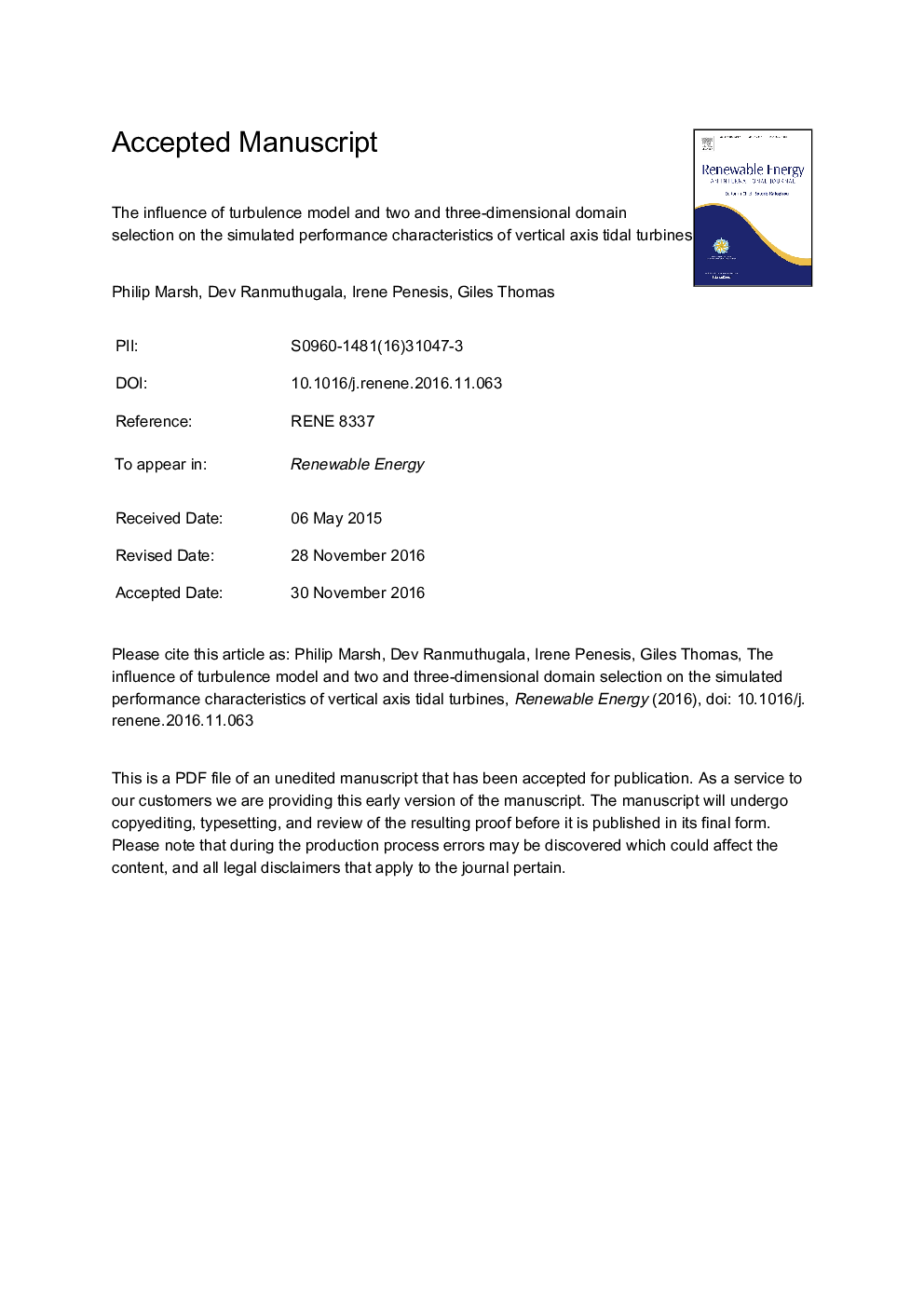| Article ID | Journal | Published Year | Pages | File Type |
|---|---|---|---|---|
| 4926421 | Renewable Energy | 2017 | 30 Pages |
Abstract
The influence of Computational Fluid Dynamics (CFD) modeling techniques on the accuracy of fixed pitch vertical axis turbine power output predictions was investigated. Using Two-Dimensional (2D) and Three-Dimensional (3D) models, as well as the Baseline-Reynolds Stress Model (BSL-RSM) and the k-Ï Shear Stress Transport (k-Ï SST) model in its fully turbulent and laminar-to-turbulent formulation, differences in power output modeling accuracy were evaluated against experimental results from literature. The highest correlation was found using a 3D domain model that fully resolved the boundary layer combined with the k-Ï SST laminar-to-turbulent model. The turbulent 3D fully resolved boundary layer k-Ï SST model also accurately predicted power output for most rotational rates, at a significantly reduced computational cost when compared to its laminar-to-turbulent formulation. The 3D fully resolved BSL-RSM model and 3D wall function boundary layer k-Ï SST model were found to poorly simulate power output. Poor output predictions were also obtained using 2D domain k-Ï SST models, as they were unable to account for blade tip and strut effects. The authors suggest that 3D domain fully turbulent k-Ï SST models with fully resolved boundary layer meshes are used for predicting turbine power output given their accuracy and computational efficiency.
Keywords
Related Topics
Physical Sciences and Engineering
Energy
Renewable Energy, Sustainability and the Environment
Authors
Philip Marsh, Dev Ranmuthugala, Irene Penesis, Giles Thomas,
